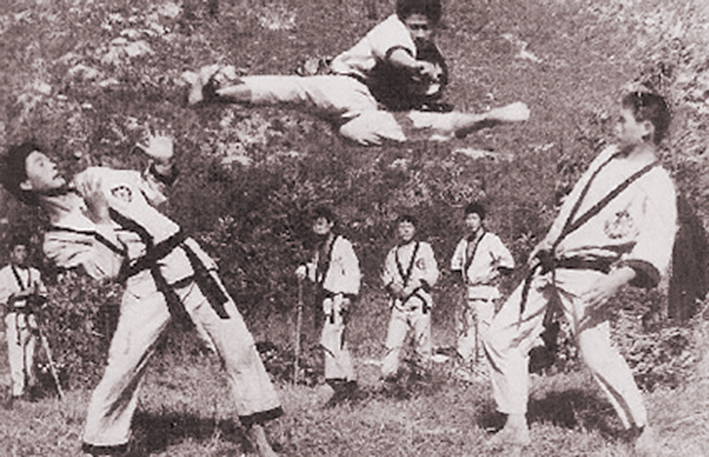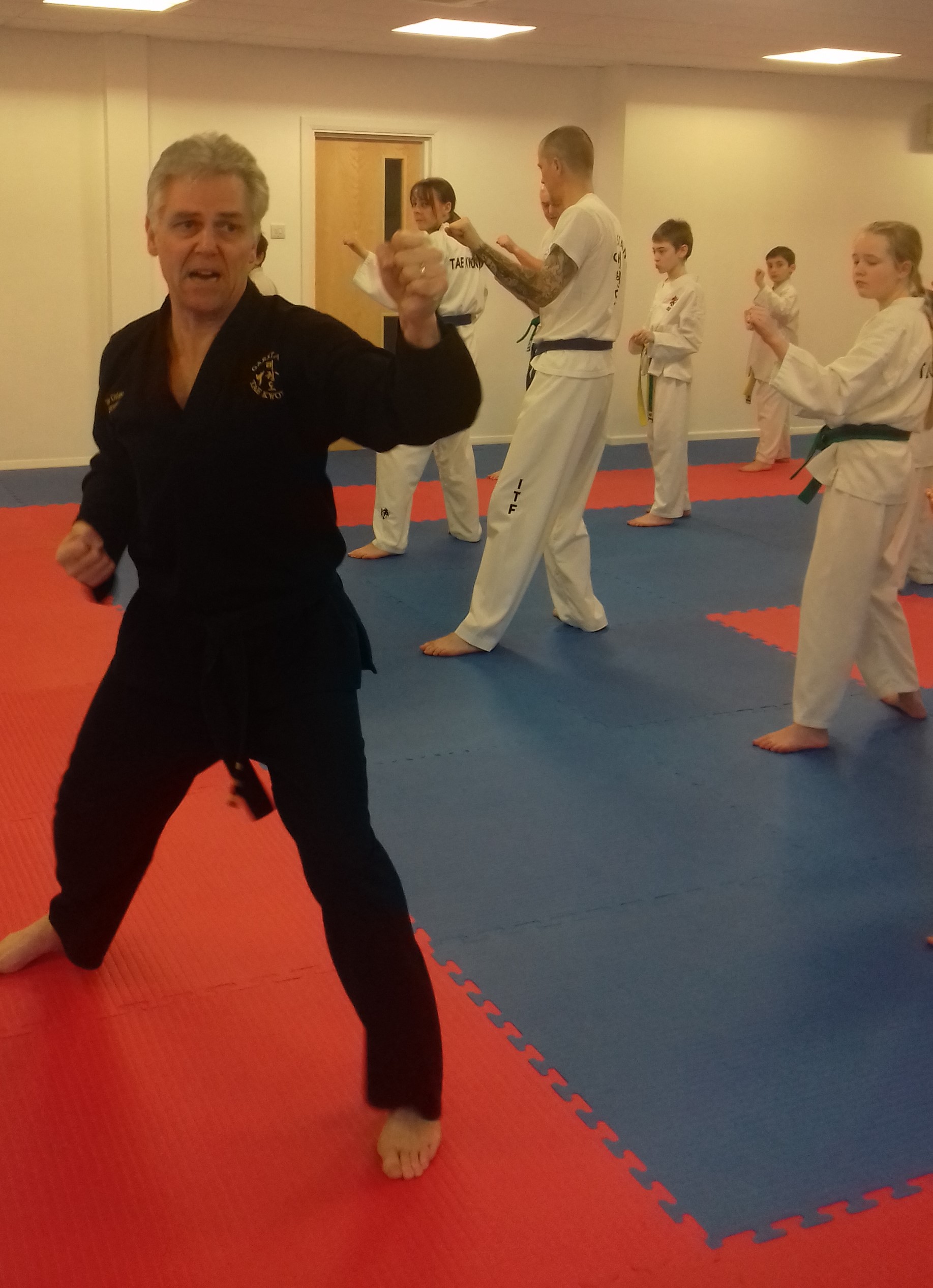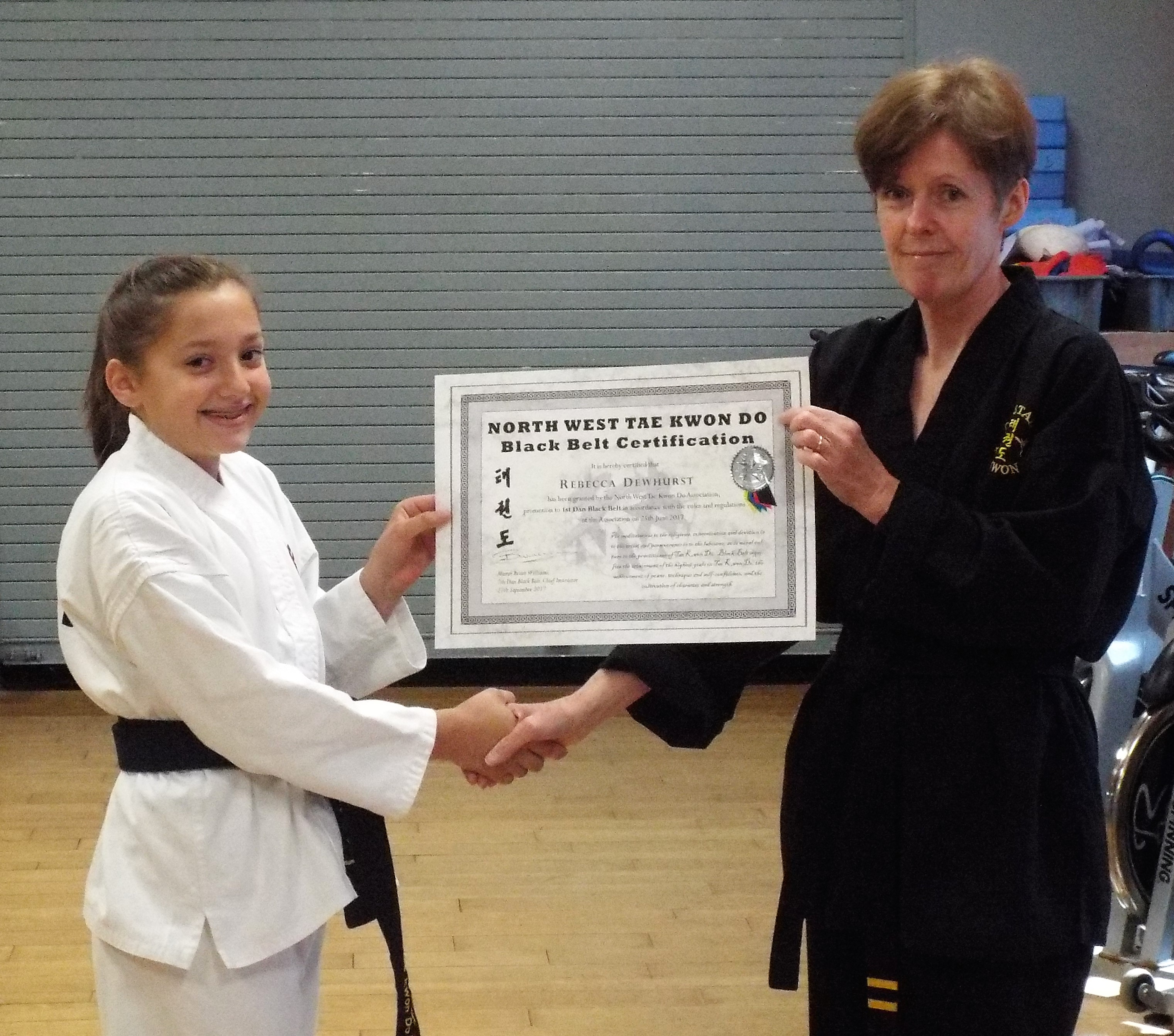A brief history and explanation
Taekwondo is a martial art that in "todays" form
of self-defence has evolved by combining many different styles of
martial arts that existed in Korea over the last 2,000 years and
some martial arts styles from countries that surround Korea.
Taekwondo incorporates the abrupt linear movements of Karate and
the flowing, circular patterns of Kung-fu with native kicking
techniques. A few of the earlier martial arts styles that
contributed to Taekwondo are: T'ang-su, Taek Kyon, also known as
Subak, Tae Kwon, Kwonpup and Tang Soo Do. The main influence on ITF
Taekwondo is, however, quite clear to see. General Choi gained a
second degree Black Belt in Shotokan Karate with many of the hand
techniques and even some of the earlier patterns, (Tul), bearing
remarkable similarity to those of the Shotokan style. During the
years of expansion to the west, Taekwondo was even referred to as,
'Korean Karate'.

Taekwondo is an empty-hand combat form that
entails the use of the whole body. Tae means "to Kick" or "Smash
with the feet," Kwon implies "punching" or "destroying with the
hand or fist," and Do means "way" or "method." Taekwondo thus, is
the technique of unarmed combat for self-defence that involves the
skilful application of techniques that include punching, jumping
kicks, blocks, dodges, parrying actions with hands and feet. It is
more than a mere physical fighting skill, representing as it does a
way of thinking and a pattern of life requiring strict discipline.
It is a system of training both the mind and the body in which
great emphasis is placed on the development of the trainee's moral
character."
Our style, ITF, is based around the teachings of
General Choi Hong Hi, a Korean General, 9th Dan, and who is
considered to have created the name for the modern art of
Taekwondo. Against the whishes of the then ruling party in South
Korea, General Choi didn’t wish to concentrate on the sport element
of the art and moved his headquarters for the system to Canada for
further development whilst a new sporting system was being
developed under the auspicices of the current government. Today, it
is believed that there are over 30 million practitioners of
Taekwondo spread throughout 156 countries although some of these
will practice WT, also known as Olympic, style
Taekwondo.
As Taekwondo is a ‘Way’ and not just a form of
fighting, we try to grow as individuals and hold to certain
values.
These we call the tenants of Taekwondo:
Courtesy - to be polite to one’s
instructor, seniors and fellow students. Be willing and eager to
help others.
Integrity - to be honest with
oneself and others. One must be able to understand the principles
that distinguish right from wrong. Present a positive image and be
a role model for other students. Promote and be an ambassador for
Taekwondo.
Perseverance - to
achieve a goal, be it a higher grade or a technique, you must not
stop trying, you must persevere. Recognise areas for personal
development.
Self-control – to lose your
temper when performing techniques against an opponent can be very
dangerous and shows lack of control. To be able to live and train
within your own limits shows good self-control.
Indomitable Spirit – to show
courage when you and your principles are pitted against
overwhelming odds. Support your fellow student in their progression
even if they surpass your own grade.



